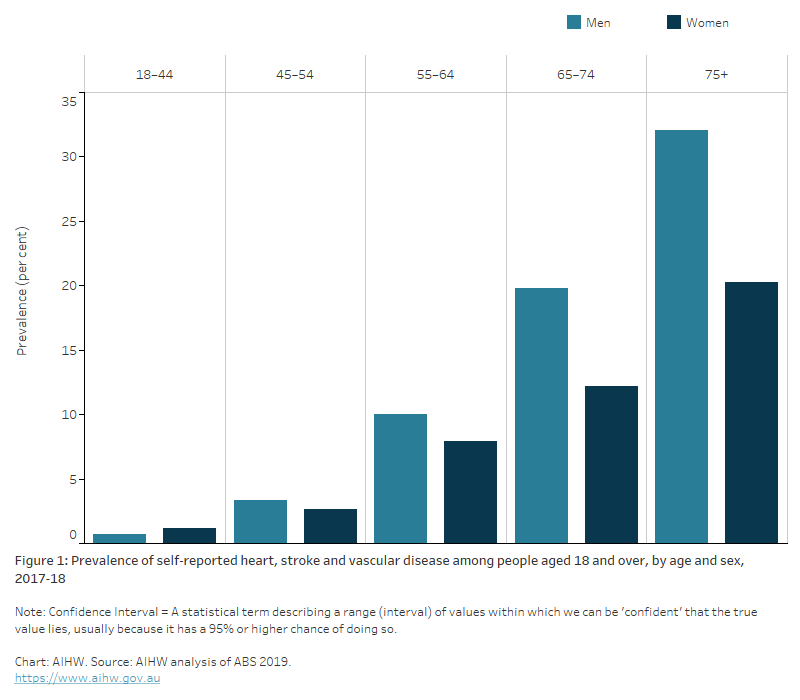Cardiovascular disease
Cardiovascular disease – also known as heart, stroke and vascular disease – is a broad term that describes the many different diseases and conditions that affect the heart and blood vessels. Common types of cardiovascular disease in Australia include coronary heart disease, stroke and heart failure.
Cardiovascular disease and chronic kidney disease are interrelated. Both diseases share common risk factors such as smoking, obesity, high blood pressure, diabetes and dyslipidaemia. Disease of one organ can impair function in the other.
Cardiovascular disease can result in a reduced supply of blood to the kidneys, which can lead to kidney disease. People with chronic kidney disease are at greater risk of coronary artery disease, heart failure, arrhythmias, and sudden cardiac death. People with kidney failure are at much higher risk of mortality due to cardiovascular disease (Go et al. 2004, Jankowski et al. 2021). In Australia, cardiovascular disease is the most common cause of death among people who have chronic kidney disease.
An estimated 1.2 million Australians aged 18 and over (6.2% of the adult population) had 1 or more conditions related to heart, stroke or vascular disease, based on self-reported data from the ABS 2017–18 National Health Survey (AIHW 2021).
The prevalence of heart, stroke and vascular disease among adults in 2017–18:
- was higher among men (641,000, an age-standardised rate of 6.5%) than women (509,000, an age-standardised rate of 4.8%)
- increased with age – 26% of people aged 75 and over had heart, stroke and vascular disease, compared with 1.0% of adults aged 18–44 (Figure 1).
Figure 1: Prevalence of self-reported heart, stoke and vascular disease among people aged 18 and over, by age and sex, 2017–18
The bar chart shows the prevalence of self-reported heart, stroke and vascular disease by age group in 2017–18. Rates were highest among men and women aged 75 and over (32% and 20%).

Variation between population groups
- In 2018–19, an estimated 42,000 Indigenous adults (8.6%) self-reported having heart, stroke and vascular disease. After adjusting for different population age structures, Indigenous adults were 2.1 times as likely as non-Indigenous adults to self-report having heart, stroke and vascular disease (AIHW 2021).
- The age-standardised prevalence rate of self-reported heart, stroke and vascular disease did not vary significantly between adults living in the most and least disadvantaged socioeconomic areas in 2017–18.
- The age-standardised prevalence rate of self-reported heart, stroke and vascular disease did not vary significantly across remoteness area in 2017–18.
ABS (Australian Bureau of Statistics) (2019) Microdata: National Health Survey, 2017–18, AIHW analysis of detailed microdata, accessed 4 March 2021.
AIHW (Australian Institute of Health and Welfare) (2021) Heart, stroke and vascular disease: Australian facts, AIHW, Australian Government, accessed 1 February 2022.
Go AS, Chertow GM, Fan D, McCulloch CE and Hsu C (2004) Chronic kidney disease and the risks of death, cardiovascular events, and hospitalization, New England Journal of Medicine, 351:1296–1305, doi: 10.1056/NEJMoa041031.
Jankowski J, Floege J, Fliser D, Böhm M and Marx N (2021) Cardiovascular disease in chronic kidney disease: pathophysiological insights and therapeutic options. Circulation, 143:1157–1172, doi: 10.1161/CIRCULATIONAHA.120.050686.


